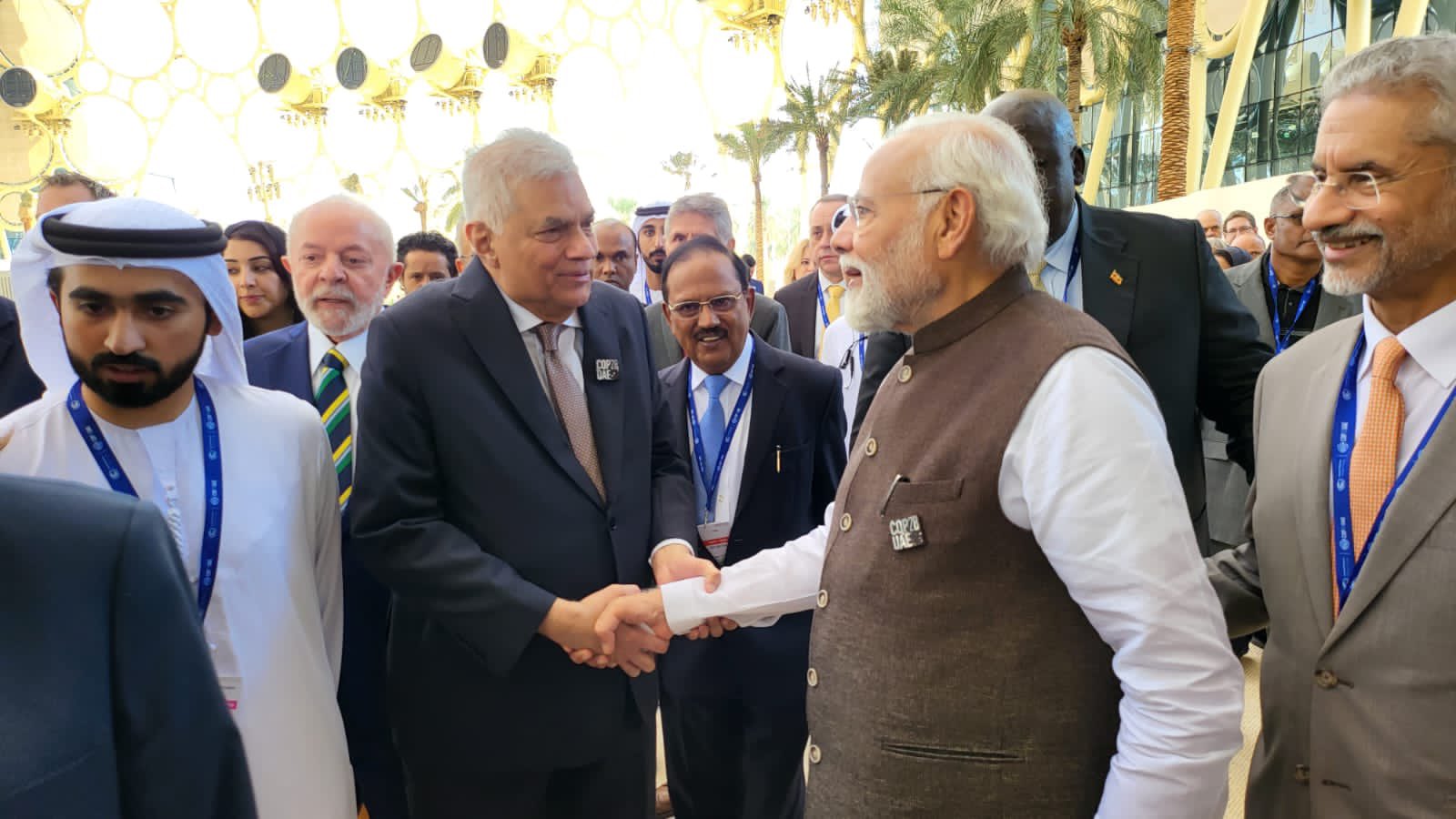
Sri Lanka and India's leaders meet at COP28 last month.
The Indian government is reportedly likely to carry a feasibility study for the construction of a 23-kilometer bridge connecting Tamil Nadu’s Dhanushkodi to Tamil Eelam’s Talaimannar, according to a report in the Times of India.
This initiative stems from an agreement between India and Sri Lanka to explore the feasibility of establishing land access to the ports of Trincomalee and Colombo, and is part of a long standing push from Delhi to promote greater linkages with the Tamil North-East.
The accord was reached during Sri Lankan president Ranil Wickremesinghe's visit to Delhi in July of last year. Following talks at Hyderabad House, Indian prime minister Narendra Modi, and Wickremesinghe signed four agreements, including one aimed at transforming the Sri Lankan port of Trincomalee into a regional hub for industry and energy. In bilateral discussions on July 21, Wickremesinghe and Modi concurred on the need to conduct a feasibility study for land connectivity, not only for ports but also in the domains of air, maritime, trade, and energy.
Sources revealed to The Times of India that the Indian Ministry of External Affairs has outlined plans to initiate the feasibility study for the bridge, emphasizing its commitment to comprehensive planning before moving forward.
"The long sea bridge would require huge funds, but it will prove to be a boon for bilateral trade," said a source. "But for that, the government has to evaluate technical, economic, and environmental aspects to see whether it's viable."
The proposal for a sea bridge between Dhanushkodi and Talaimannar has been a subject of discussion for over two decades. Often referred to as the Hanuman Bridge or Ram Sethu, the concept has mythological significance drawn from the Ramayana, where Lord Rama, aided by Hanuman's Monkey Brigade, constructed a bridge over the Palk Strait to reach Lanka and rescue his captive wife, Sita, from King Ravana.
Several Sri Lankan governments, however, have remained staunchly opposed to such a move, with Sinhala nationalists claiming with such a bridge “sovereignty will be destroyed”.
Read more below.
